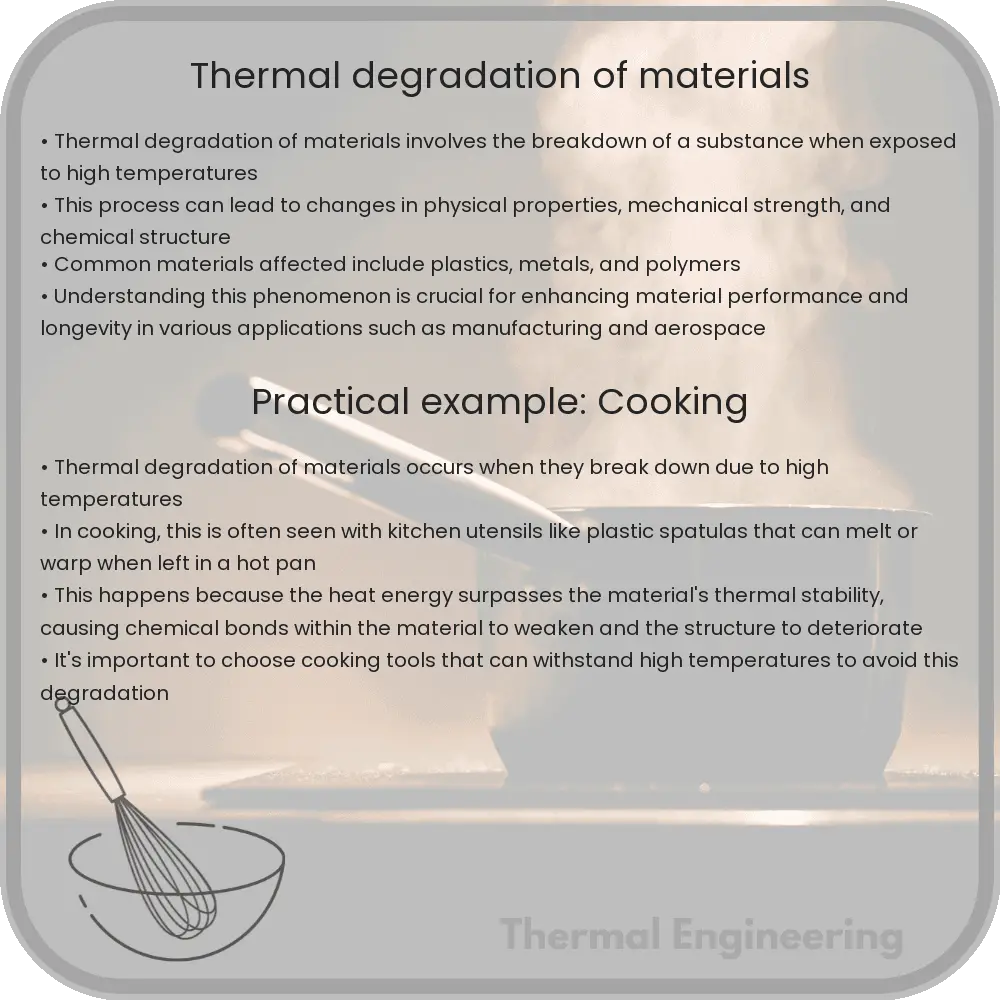Learn about thermal degradation of materials, its mechanisms, effects, and critical importance in engineering applications.

Understanding Thermal Degradation of Materials
Thermal degradation of materials is a critical factor in engineering that refers to the deterioration in the properties of a material due to exposure to high temperatures. This process can affect a wide range of materials including polymers, metals, and ceramics, influencing their mechanical strength, color, stability, and overall functionality. Understanding the mechanisms and effects of thermal degradation is essential for designing materials that can withstand high temperatures in applications such as aerospace, automotive, and electronics.
Mechanisms of Thermal Degradation
Thermal degradation can occur through various mechanisms, depending on the type of material and the conditions of exposure:
- Oxidative Degradation: Typically seen in polymers and metals, this involves the reaction of the material with oxygen at elevated temperatures, leading to the formation of oxides that weaken the material structurally.
- Thermal Decomposition: High temperatures can cause chemical bonds within a material to break, leading to a structural breakdown. This is particularly common in polymers where the breaking of bonds leads to a reduction in molecular weight.
- Phase Transitions: In metals and alloys, high temperatures can result in phase changes that alter the material’s microstructure and properties. For example, excessive heat can cause the loss of temper in steel, reducing its hardness and strength.
Each of these mechanisms can negatively impact the material’s performance and lifespan in an application, making understanding and mitigation of thermal degradation vital in material engineering.
Factors Influencing Thermal Degradation
The rate and severity of thermal degradation depend on several factors:
- Temperature: Generally, higher temperatures accelerate the rate of degradation. Each material has a threshold temperature above which degradation becomes significant.
- Environment: The presence of oxygen, moisture, and other chemicals in the environment can enhance degradation, especially through oxidative and hydrolytic processes.
- Material Composition: Additives, fillers, and stabilizers can either enhance or reduce a material’s resistance to high temperatures.
- Time of Exposure: Prolonged exposure to elevated temperatures typically increases the extent of degradation.
Measuring and Testing Thermal Degradation
To accurately predict and assess the thermal degradation of materials, several analytical techniques are used:
- Thermogravimetric Analysis (TGA): Measures the amount of weight a material loses as it is heated. This technique is particularly useful for determining thermal stability and composition changes.
- Differential Scanning Calorimetry (DSC): Measures heat flows associated with temperature changes in the material, useful for understanding the oxidative stability and phase transitions.
- Dynamic Mechanical Analysis (DMA): Determines changes in material properties such as elasticity and viscosity with temperature fluctuations.
Applications and Practical Considerations
The ability to resist thermal degradation is crucial for materials used in high-temperature environments like jet engines, furnaces, and brake systems. Engineers must select and design materials that can sustain physical integrity and functionality under these conditions, often employing computational modeling and experimental tests to predict performance.
In conclusion, thermal degradation is a complex yet paramount consideration in material engineering. By understanding the underlying mechanisms and influencing factors, engineers can better design materials that maintain desirable properties even under the harsh condition of elevated temperatures, ensuring safety, efficiency, and longevity in technological applications.